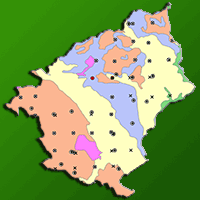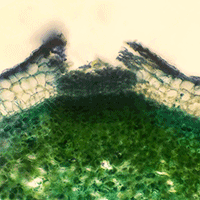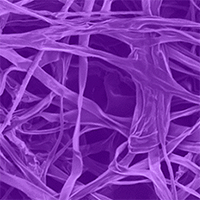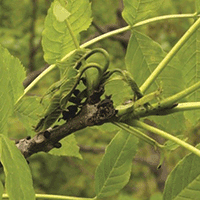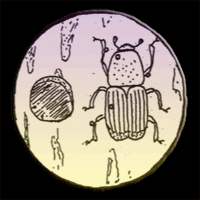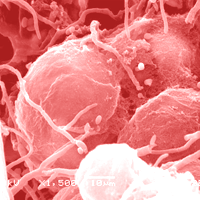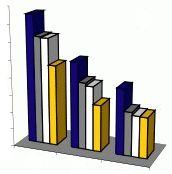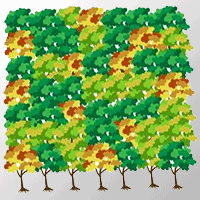
Temporal development of collar necroses and butt rot in association with ash dieback
Rasmus Enderle , Felicitas Sander, Berthold Metzler
iForest - Biogeosciences and Forestry, Volume 10, Issue 3, Pages 529-536 (2017)
doi: https://doi.org/10.3832/ifor2407-010
Published: May 05, 2017 - Copyright © 2017 SISEF
Research Articles
Abstract
In recent years collar necroses and butt rot associated with the ash dieback disease occurred with alarming frequency in Fraxinus excelsior. We analysed tree ring structures to identify the year of necrosis initiation on a set of 507 necroses on 155 stem discs from nine severely diseased south-western German stands. The number of first-time infections of trees was highest from 2010 to 2012 and slightly decreased in 2013 and 2014, whereas the total number of newly emerging individual necroses remained high. Logistic modelling of disease progression suggests that collar rot infection has almost reached its maximum incidence and that a fraction of trees will remain healthy at the root collar. On average, Hymenoscyphus fraxineus was isolated more frequently from younger collar necroses, whereas older necroses were more often colonized by Armillaria spp. Advanced stages of rot that may pose a risk to forest workers, visitors and traffic were observed already in two years-old necroses infected by Armillaria spp.
Keywords
Ash Dieback, Collar Necrosis, Disease Progression, Armillaria, Butt Rot, Epidemiology
Authors’ Info
Authors’ address
Felicitas Sander
Berthold Metzler
Department of Forest Health, Forest Research Institute of Baden-Württemberg, Wonnhaldestrasse 4, 79100 Freiburg (Germany)
Corresponding author
Paper Info
Citation
Enderle R, Sander F, Metzler B (2017). Temporal development of collar necroses and butt rot in association with ash dieback. iForest 10: 529-536. - doi: 10.3832/ifor2407-010
Academic Editor
Alberto Santini
Paper history
Received: Feb 13, 2017
Accepted: Apr 14, 2017
First online: May 05, 2017
Publication Date: Jun 30, 2017
Publication Time: 0.70 months
Copyright Information
© SISEF - The Italian Society of Silviculture and Forest Ecology 2017
Open Access
This article is distributed under the terms of the Creative Commons Attribution-Non Commercial 4.0 International (https://creativecommons.org/licenses/by-nc/4.0/), which permits unrestricted use, distribution, and reproduction in any medium, provided you give appropriate credit to the original author(s) and the source, provide a link to the Creative Commons license, and indicate if changes were made.
Web Metrics
Breakdown by View Type
Article Usage
Total Article Views: 50525
(from publication date up to now)
Breakdown by View Type
HTML Page Views: 42539
Abstract Page Views: 3140
PDF Downloads: 3766
Citation/Reference Downloads: 22
XML Downloads: 1058
Web Metrics
Days since publication: 3143
Overall contacts: 50525
Avg. contacts per week: 112.53
Citation Metrics
Article Citations
Article citations are based on data periodically collected from the Clarivate Web of Science web site
(last update: Mar 2025)
Total number of cites (since 2017): 23
Average cites per year: 2.56
Publication Metrics
by Dimensions ©
Articles citing this article
List of the papers citing this article based on CrossRef Cited-by.
References
Eschentriebsterben [Ash dieback]. In: “Waldzustandsbericht 2015 für Baden-Württemberg“ (Forstliche Versuchs- und Forschungsanstalt Baden-Württemberg ed). FVA, Freiburg, Germany, pp. 46-53. [in German]
Gscholar
Ontogeny and physiology. In: “Armillaria Root Disease” (Shaw CG III, Kile GA eds). USDA, Washington, DC, USA, pp. 21-46.
Gscholar
Xylobionte Pilze als bedeutungsvolle Folgepathogene des Eschentriebsterbens in Norddeutschland [Wood-inhabiting fungi as significant secondary pathogens of ash dieback]. Julius-Kühn-Archiv 227: 200-201. [in German]
Gscholar
Eschentriebsterben: Wissensstand und Praxisempfehlungen [Ash dieback: state of knowledge and practical recommendations]. Kärntner Forstverein Information 73: 18-20. [in German]
Gscholar
Stammfußnekrosen bei Esche [Collar necroses on ash]. AFZ-Der Wald 70 (20): 29-31. [in German]
Gscholar
Bundesweite Zusammenstellung: Handlungsempfehlungen beim Eschentriebsterben [Nationwide compilation: recommended actions regarding ash dieback]. AFZ-Der Wald 68 (5): 17-20. [in German]
Gscholar

